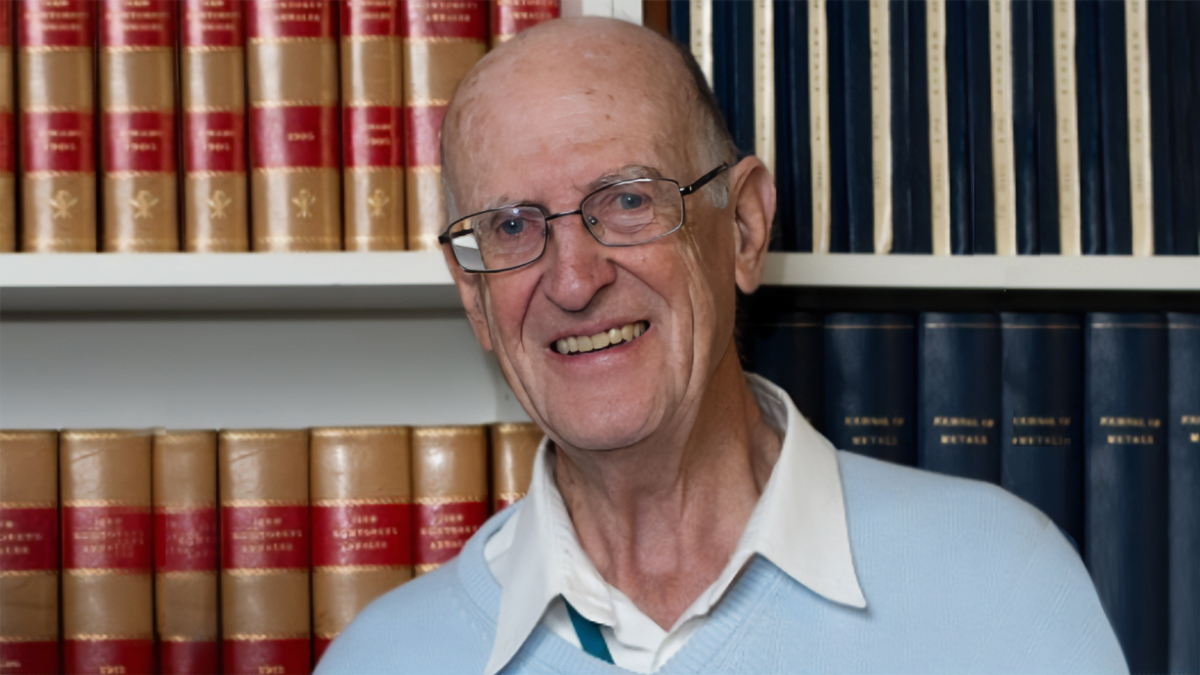A giant in materials research
Mats Hillert in memorian

During his record-long researcher’s work on Materials Science, Mats Hillert trained generations of scientists and engineers. He also laid the foundation for modern materials science at KTH.
“A innovator in Swedish and international materials research and education”, that is how Professor Emeritus Mats Hillert is described by his closest colleagues.
During the 63 years that Mats Hillert worked at the Department of Materials Science, teaching and research were modernised, and got a firm theoretical foundation of physics, chemistry and, not least, thermodynamics.
“Mats' work in thermodynamics and phase transformations permeates a significant part of what we do at the department today. His work also paved the way for so-called ab initio calculations, where the department has become a world leader,” says Professor Emeritus John Ågren.
The 50s and 60s
Originally from Gothenburg, Mats started his career at Chalmers. Then he did research at the Metallographic Institute in Stockholm and studied at MIT in Boston, where he received his doctorate in physical metallurgy.
Mats started teaching at the ”Bergssektionen” at KHT in 1959 and soon became a professor of metallography. To develop the area, he stressed the importance of publishing research results internationally. He also rapidly introduced contemporary innovations – such as electron microscopy and computer calculations – into research and teaching.
”When Mats started with computer calculations in the early 60s, he was probably the first in the country, and among the first in the world, to use computers for scientific technical calculations outside the circle of computer experts and mathematicians with a computational orientation. This was only ten years after the first “modern” computer (BESS) had been completed in Sweden,” says John Ågren.
Research and teaching
Mats' work included mapping phase transformations in the interior of materials when subjected to different treatments. His method of setting up theoretical models and verifying them contributed to the ability to predict properties of materials and components already at the planning stage, and it became the foundation of Material design. Because phase transformations are controlled by thermodynamics, Mats' research also became the basis for the software company Thermo Calc Software, which is world leading in its field today.
Mats taught generations of metallurgists, civil engineers and doctorates in modern materials technology. Under his leadership, material education at KTH was reformed. Professor Malin Selleby worked with Mats for many years and describes him as open-minded and a well-liked educator.
”Mats contributed to the informal atmosphere at the department, not least through his curiosity and his interest in discussing with everyone,” she says.
The legacy of Mats
At the department, the pioneering spirit of Mats lives on. When a new computational modeling lab started some years ago, the name Hillert Modeling Laboratory was given.
“It is largely thanks to Mats Hillert that we are internationally prominent in the field,” says the lab’s Director, Professor Levente Vitos. We continue his work to be far ahead in computational modelling for materials science.
Head of Department, Professor Annika Borgenstam, says that Mats Hillert, since his death in November 2022 has been much missed.
”Mats was amazing in so many ways, and he leaves a big void with us at KTH where he was still active,” she says.
Text: Alexandra von Kern
